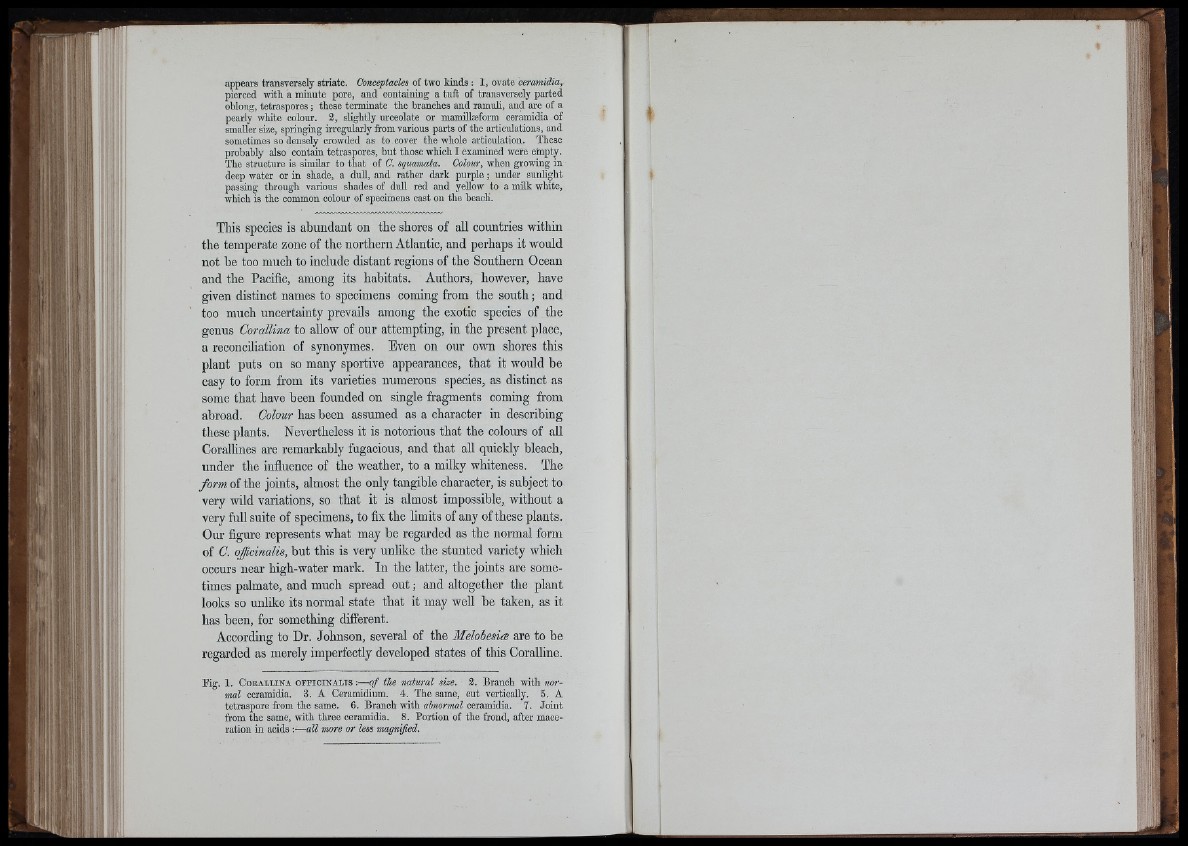
appears transversely striate. Conceptacles of two kinds : 1, ovate ceramidia,
pierced with a minute pore, and containing a tuft of transversely parted
oblong, tetraspores ; these terminate the branches and ramuli, and are of a
pearly white colour. 3, slightly urceolate or mamillæform ceramidia of
smaller size, springing irregularly from various parts of the articulations, and
sometimes so densely crowded as to cover the whole articulation. These
probably also contain tetraspores, but those which I examined were einpty.
The structure is similar to that of C. squamata. Dolour, when growing in
deep water or in shade, a dull, and rather dark purple ; under sunlight
passing through various shades of dull red and yeUow to a milk white,
which is the common colom- of specimens cast on the beach.
This species is abundant on the shores of all countries within
the temperate zone of the northern Atlantic, and perhaps it would
not be too much to include distant regions of the Southern Ocean
and the Pacific, among its habitats. Authors, however, have
given distinct names to specimens coming from the south ; and
too much uncertainty prevails among the exotic species of the
genus Corallina to allow of our attempting, in the present place,
a reconciliation of synonymes. Even on our own shores this
plant puts on so many sportive appearances, that it would be
easy to form from its varieties numerous species, as distinct as
some that have been founded on single fragments coming from
abroad. Colour has been assumed as a character in describing
these plants. Nevertheless it is notorious that the colours of all
Corallines are remarkably fugacious, and that all quickly bleach,
under the influence of the weather, to a milky whiteness. The
form of the joints, almost the only tangible character, is subject to
very wild variations, so that it is almost impossible, without a
very full suite of specimens, to fix tbe limits of any of these plants.
Our figure represents what may be regarded as tbe normal form
of C. officinalis, but tbis is very unlike the stunted variety which
occurs near high-water mark. In the latter, the joints are sometimes
palmate, and much spread out ; and altogether the plant
looks so unlike its normal state that it may well be taken, as it
has been, for sometbing different.
According to Dr. Johnson, several of the Melobesiæ are to be
regarded as merely imperfectly developed states of this Coralline.
Fig. 1. Coeallina ofb-io in a l is :—o f tjve natural size. 3. Branch with normal
ceramidia. 3. A Ceramidium. 4. The same, cut vertically. B. A
tetraspore from the same. 6. Branch with abnormal ceramidia. 7. Joint
from the same, with three ceramidia. 8. Portion of the frond, after maceration
in acids :—all more or less